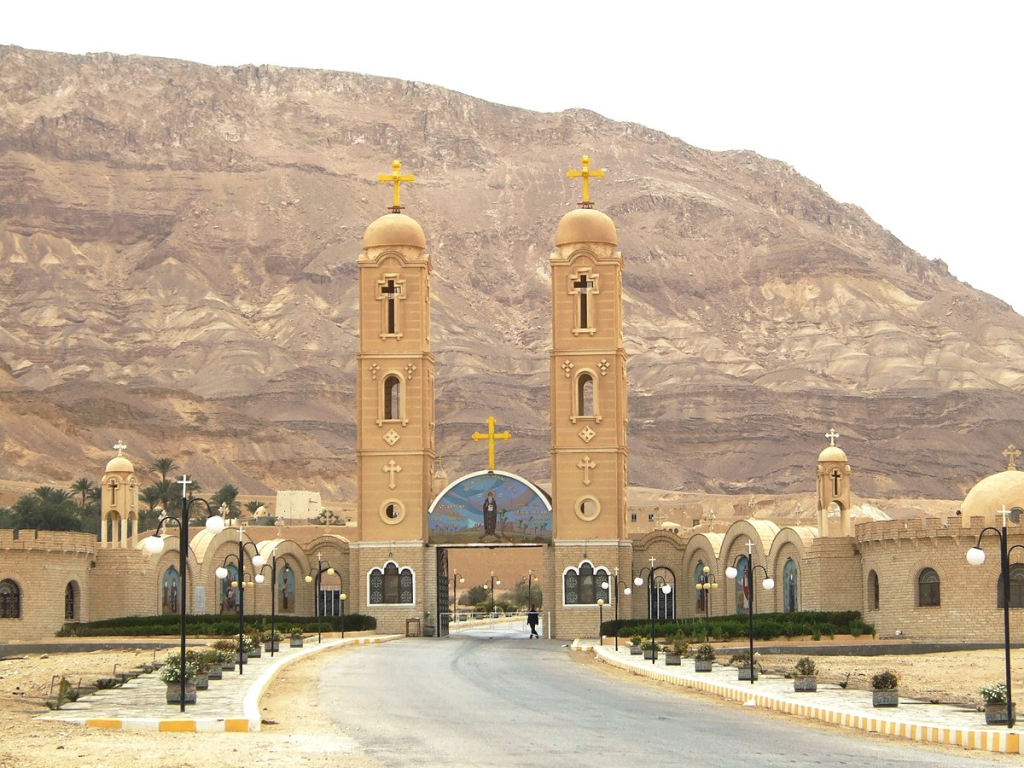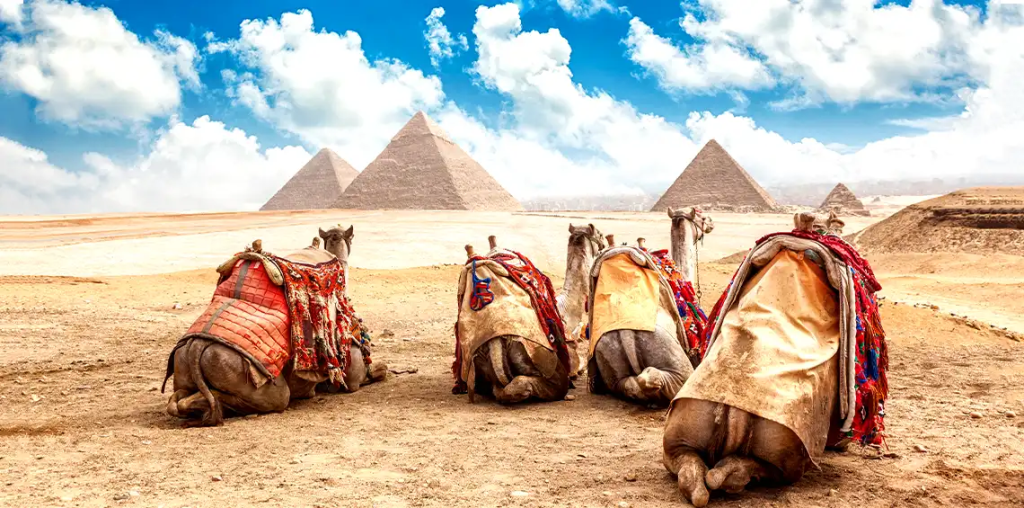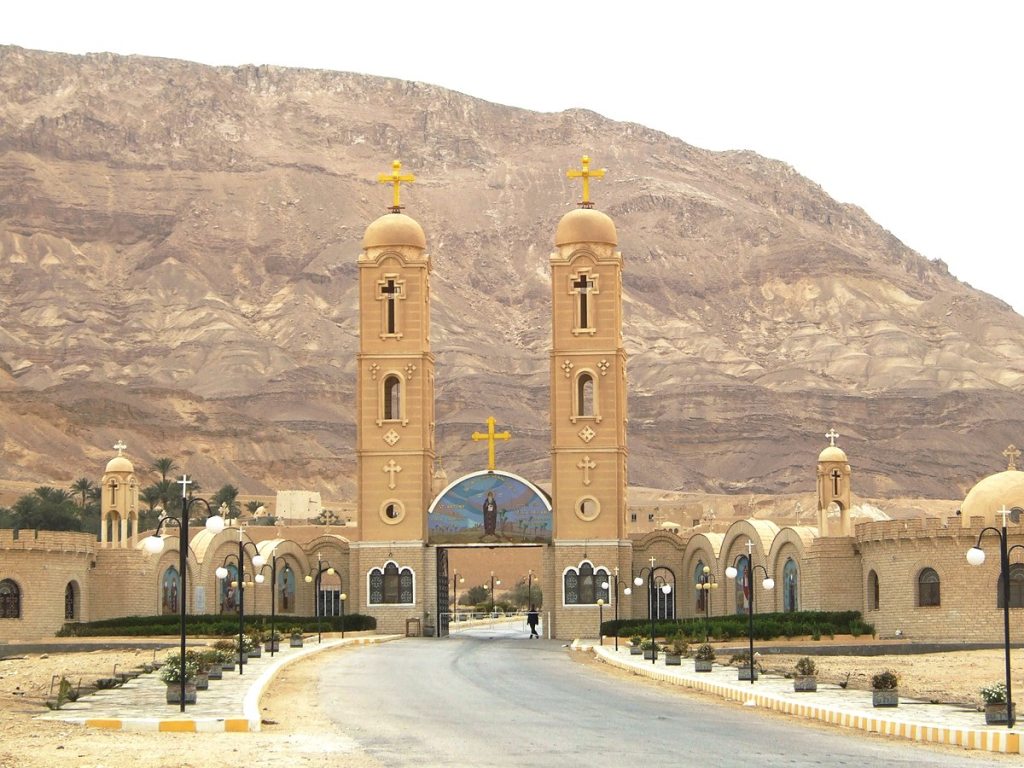
Deep within the wilderness of Egypt’s Eastern Desert, the Monastery of Saint Paul the Anchorite stands as a testament to the human quest for spiritual enlightenment and the enduring legacy of asceticism. Named after Saint Paul, an early Christian hermit and desert father, this remote monastery embodies the solitude, devotion, and connection with the divine that characterized the lives of the desert fathers. In this introspective blog post, we embark on a journey to explore the profound history, spiritual significance, and timeless allure of the Monastery of Saint Paul the Anchorite.
A Refuge of the Desert Fathers: The Monastery of Saint Paul the Anchorite is situated in an austere desert landscape, echoing the solitude that defined the lives of the desert fathers and anchorites. The monastery’s location reflects a timeless tradition of seeking spiritual communion through withdrawal from the world.
Saint Paul the Anchorite: The monastery is named after Saint Paul, an early Christian ascetic who lived a life of extreme solitude and devotion in the desert. His example of renunciation and closeness to God inspired the establishment of monastic communities in the region.
Architectural Simplicity: The architecture of the Monastery of Saint Paul reflects the humility and simplicity that characterize the monastic life. Its structures, which include chapels, cells, and communal spaces, are designed to foster introspection and prayer.
Spiritual Resonance: The monastery’s isolation and tranquil atmosphere create an environment that encourages deep contemplation and spiritual reflection. Its remote location allows visitors to connect with the desert’s silence and the profound mysteries of existence.
Historical Resilience: Throughout its history, the Monastery of Saint Paul has endured challenges, including periods of political change and external threats. Its ability to preserve its spiritual heritage amidst changing circumstances underscores its enduring significance.
Cultural and Ecumenical Dialogue: The monastery’s historical and spiritual significance transcends religious boundaries. It has been a site of pilgrimage and reverence for various Christian denominations, fostering ecumenical dialogue and understanding.
A Testament to Devotion: The Monastery of Saint Paul serves as a testament to the power of human devotion and the search for meaning beyond the material world. Its very existence attests to the enduring aspiration to commune with the divine.
Preservation and Spiritual Continuity: Efforts to preserve the Monastery of Saint Paul highlight its importance as a cultural and spiritual treasure. Restoration projects and educational initiatives ensure that its legacy endures.
An Invitation to Introspection: The Monastery of Saint Paul the Anchorite invites visitors to step into a world of contemplation, where the boundaries between the physical and the spiritual dissolve. Amidst the silence of the desert, the monastery beckons us to explore the depths of our own souls and connect with the mysteries that lie within.
Book Your Holiday to Monastery of Saint Paul the Anchorite
Our meticulously curated tours not only grant you the chance to immerse yourself in the splendor of St. Paul’s Monastery but also lead you on a comprehensive exploration of Egypt’s most revered religious, historical, and architectural landmarks. From the vibrant energy of Cairo to the coastal allure of Alexandria, from the timeless wonders of Luxor to the tranquil beauty of Aswan, our tours encompass the very essence of this land’s rich heritage.
With every step you take, every monument you encounter, you’ll find yourself drawn into a tapestry woven with threads of devotion, history, and the indomitable spirit of Egypt. Our Egypt holiday tours from the UK ensure that you experience the greatness of St. Paul’s Monastery and so much more, guided by expert tour guides who bring these stories to life. Book your journey now and venture into the heart of Egypt’s wonders. Let the miracles of the eastern desert and the divine legacy of St. Paul’s Monastery captivate your senses and leave you with memories that will forever linger in your heart.

4 Days Cairo and Abu Simbel Tour Package
Embark on an unforgettable 4-day tour package to Cairo and Abu Simbel, where ancient wonders and majestic temples await. Explore the iconic sites of Cairo, including the pyramids of Giza and the Egyptian Museum, before journeying to Abu Simbel to witness the breathtaking temples of Ramses II and Nefertari. With our carefully curated itinerary, knowledgeable guides, and inclusive services, this tour offers a compact yet immersive experience of Egypt’s rich history. Discover the secrets of the pharaohs, marvel at awe-inspiring architecture, and create lasting memories View Tour Details

5 Days Cairo and Alexandria Tour Package
Embark on a 5-day journey through Egypt’s most fascinating cities, Cairo and Alexandria. From the grand pyramids and ancient temples to the coastal beauty and cultural landmarks, this tour package is designed to showcase the best of both worlds. With expert guides, comfortable accommodations, and convenient transportation, you’ll have an immersive and hassle-free experience. Join us on this captivating adventure and create memories that will last a lifetime View Tour Details

6 Days Cairo, Luxor, Aswan & Abu Simbel Package
Embark on an extraordinary 6-day journey through the heart of ancient Egypt with our Cairo, Luxor, Aswan & Abu Simbel package. Begin your adventure in Cairo, where you’ll explore the iconic pyramids and delve into the treasures of the Egyptian Museum. Continue to Luxor and Aswan, where you’ll witness the grand temples along the Nile River, and conclude your tour with a visit to the awe-inspiring temples of Abu Simbel. With expert guides, comfortable accommodations, and hassle-free transportation, this package offers a comprehensive exploration of Egypt’s historic sites. Join us on this incredible journey and unlock the secrets of the pharaohs View Tour Details

7 Days Cairo, Luxor & Alexandria Tour
Experience the best of Egypt’s cultural and coastal attractions with our 7-day Cairo, Luxor & Hurghada holiday. Begin your journey in Cairo, where you’ll discover the iconic Pyramids of Giza, explore the ancient artifacts at the Egyptian Museum, and immerse yourself in the vibrant atmosphere of Egypt’s capital. Then, travel to Luxor, often referred to as the world’s greatest open-air museum, where you’ll explore magnificent temples, tombs, and archaeological sites. Finally, unwind in the idyllic beach destination of Hurghada, known for its pristine beaches and vibrant marine life. With comfortable accommodations, expert guides, and hassle-free transportation, this holiday package provides a well-rounded experience of Egypt’s rich history and natural beauty View Tour Details
Related Egypt Tours Blog

The Colored Canyon, located in the Sinai Peninsula, is a geological marvel characterized by its multicolored rock walls and narrow passages. The vibrant hues that grace the canyon’s walls are a result of mineral deposits and erosion, creating a surreal landscape that is unlike any other. Our guided tour allows you to traverse the twists and turns of the canyon, marvel at its stunning formations, and connect with the forces of nature that shaped this masterpiece View Tour Details

Monastery of Saint Paul the Anchorite
The Monastery of Saint Paul the Anchorite, also known as the “Red Monastery,” is one of Egypt’s oldest Christian monastic settlements. Situated in the Eastern Desert near the Red Sea, this remote monastery holds a legacy of devotion and spiritual solitude that spans centuries. Our guided tour offers you the opportunity to connect with the history of Christian asceticism, witness the monastery’s ancient architecture, and experience the peaceful ambiance of this sacred oasis View Tour Details

Moses Springs, also known as “Ain Musa,” is a historical and natural oasis located in the Sinai Peninsula. According to tradition, this is where the biblical figure Moses encountered a group of women watering their flocks, a significant event in his life’s journey. Our guided tour offers you the chance to experience the beauty and tranquility of the springs, connect with the stories of ancient times, and reflect in the oasis’s peaceful surroundings View Tour Details
Monastery of Saint Paul the Anchorite FAQs
- What is the Monastery of Saint Paul the Anchorite? The Monastery of Saint Paul the Anchorite is a Coptic Orthodox Christian monastery located in the Eastern Desert of Egypt. It is dedicated to Saint Paul the First Hermit, also known as Saint Paul the Anchorite.
- Who was Saint Paul the Anchorite? Saint Paul the Anchorite was an early Christian ascetic and hermit who lived during the 3rd and 4th centuries. He is considered one of the first Christian hermits and is known for his extreme asceticism and devotion to a solitary life of prayer and meditation.
- Where is the Monastery of Saint Paul located? The monastery is situated near the Red Sea in the Eastern Desert of Egypt, around 180 kilometers south of Cairo and not far from the Monastery of Saint Anthony.
- Is the monastery open to visitors? Yes, the Monastery of Saint Paul is open to visitors, including pilgrims and tourists interested in exploring its history and spiritual significance.
- How can visitors reach the Monastery of Saint Paul? Visitors can reach the monastery by car, organized tours, or local transportation from nearby towns or cities. It’s recommended to travel with a guide who knows the area well.
- What can visitors see inside the monastery? Inside the monastery complex, visitors can explore the various chapel buildings, ancient churches, cells, and other structures that make up the monastery.
- Are guided tours available for the Monastery of Saint Paul? Guided tours might be available for the monastery, providing insights into its history, architecture, and the life of Saint Paul the Anchorite.
- Can visitors participate in religious services at the monastery? Visitors might have the opportunity to attend religious services, including prayers and liturgies, at the Monastery of Saint Paul, especially during regular worship times.
- What is the significance of the Monastery of Saint Paul in the Coptic tradition? The monastery holds great spiritual significance for the Coptic Orthodox Church, as it is dedicated to one of the earliest Christian hermits and serves as a place of prayer and reflection.
- Is there an entrance fee to visit the monastery? There might be an entrance fee or suggested donation for visitors to enter the Monastery of Saint Paul. These fees often contribute to the maintenance of the monastery.
- Can visitors spend the night at the monastery? Some monasteries allow visitors to stay overnight in designated accommodations, but it’s advisable to check in advance and make any necessary arrangements.
- What is the architecture of the Monastery of Saint Paul like? The architecture of the monastery includes various buildings that have been added over the centuries, reflecting the development of the monastery’s community.
- What other attractions are near the Monastery of Saint Paul? The nearby Monastery of Saint Anthony, one of the oldest Christian monasteries in the world, is also a notable attraction in the Eastern Desert.
- Is there a dress code for visitors to the monastery? Modest and respectful clothing is advised when visiting religious sites. Both men and women should cover their shoulders and knees.
- Can visitors explore the desert surroundings of the monastery? The desert surroundings of the monastery are known for their solitude and spiritual significance. Visitors might have the opportunity to explore the area on guided hikes.
- What is the historical background of the Monastery of Saint Paul? The monastery dates back to the early centuries of Christianity and has undergone various changes and expansions over its long history.
- How does the Monastery of Saint Paul contribute to Egypt’s cultural heritage? The monastery contributes to Egypt’s cultural heritage by preserving the history of Christian monasticism and providing insights into the ascetic traditions of early Christianity.
- Are there any special events or festivals held at the monastery? The monastery might hold special events, liturgical celebrations, or festivals dedicated to Saint Paul the Anchorite or other important feasts in the Coptic calendar.
- What is the role of the Monastery of Saint Paul in the local community? The monastery serves as a spiritual center for Coptic Christians and a place of pilgrimage for those seeking solace, reflection, and connection with the early Christian traditions.
- How can visitors show respect for the monastery’s sanctity? Visitors should act respectfully, follow any guidelines provided by the monastery authorities, and avoid disturbing the peaceful environment of the site.

